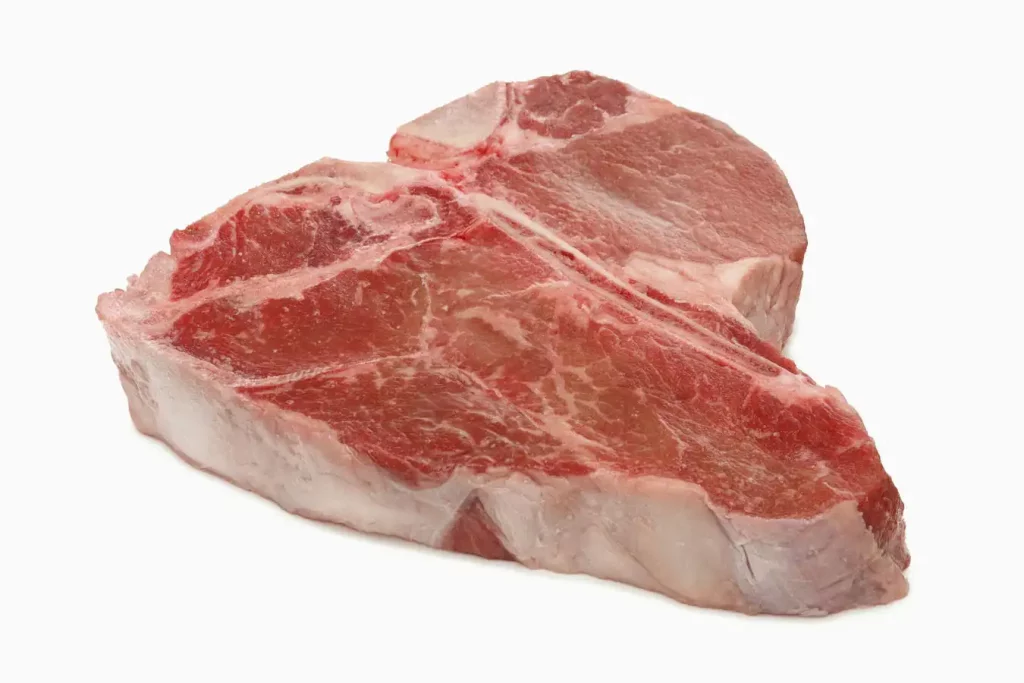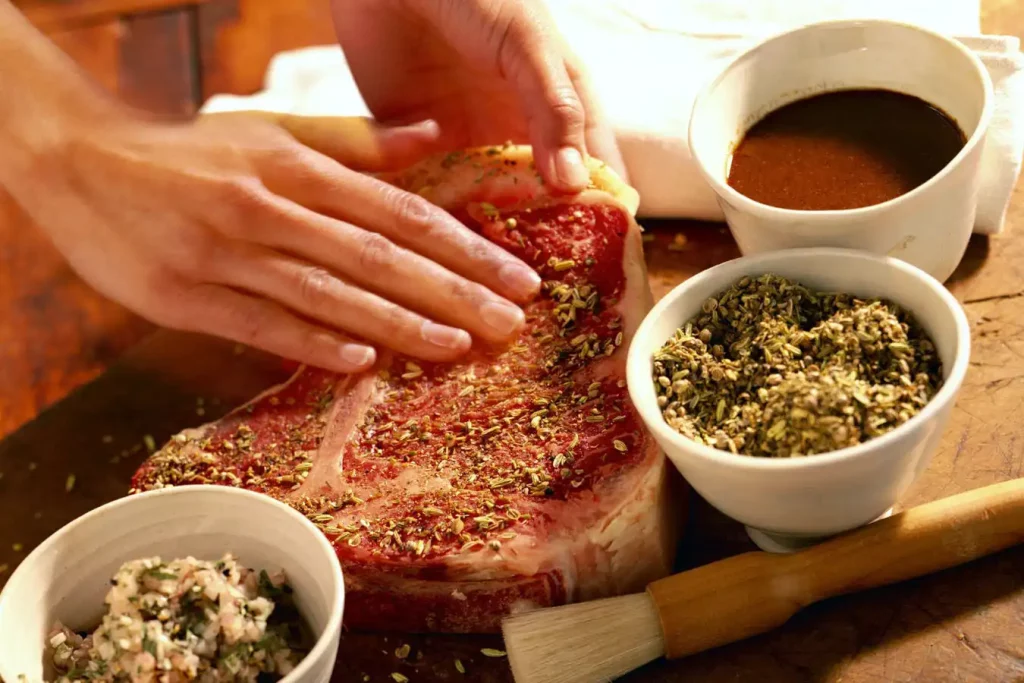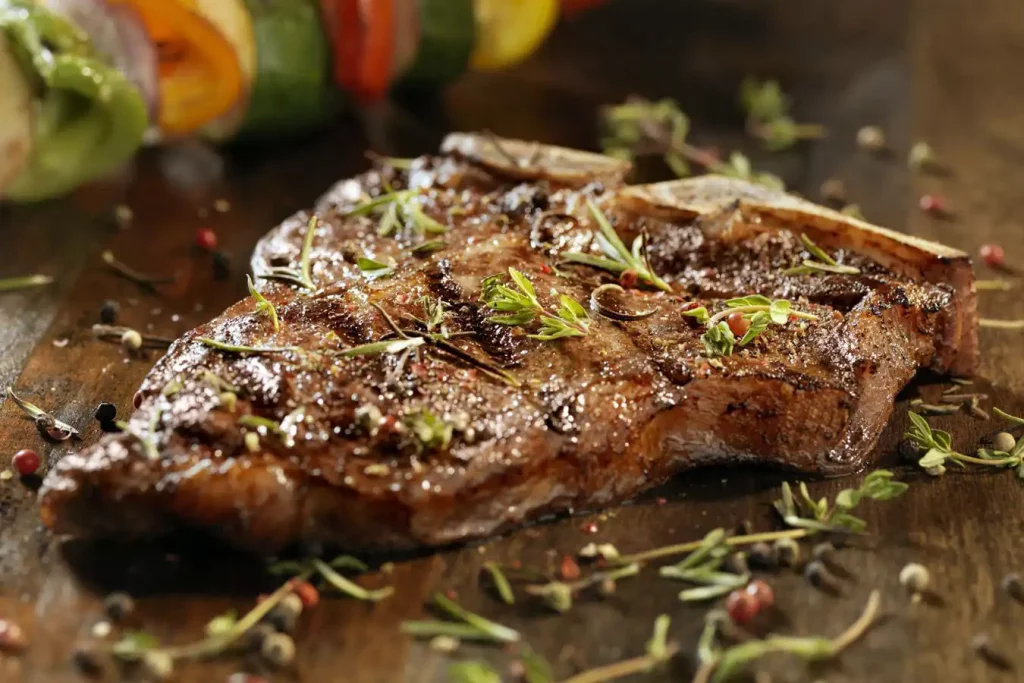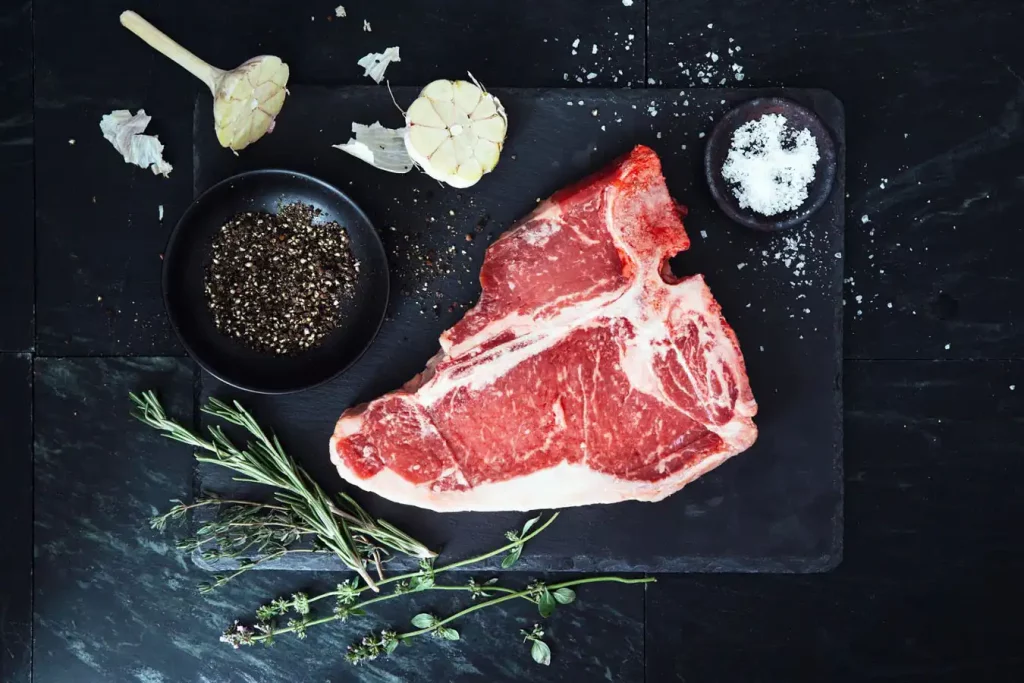Hey there, fellow steak enthusiasts! Ever wondered how to cook a porterhouse steak without a cast iron skillet?
Well, today, we’re embarking on a flavor-packed journey that will show you just that.
This piece isn’t just a tutorial—it’s your road map to a succulent, tender steak, seared to perfection with what you have in your kitchen.
Brace yourself, because by the end of this article, you’ll be the ultimate steak whisperer, and your skillet-less cooking method might just become your new secret weapon.
I’m Ovi Tanchangya, ready to guide you through the smoky allure of cooking porterhouse, ensuring you capture that reminiscent campfire taste we all crave.
Let’s roll up our sleeves and dive right in—it’s steak o’clock, my friends!
Unveiling the Porterhouse Steak
Before we dive into our culinary adventure, let’s spend a moment to appreciate our star ingredient: the porterhouse steak. Known for its tender texture and rich flavor, this cut is a meat lover’s dream. But what is a porterhouse steak, and why is it special? Let’s find out!
What is a Porterhouse Steak?
A porterhouse steak is a primal cut of beef that combines two of the most luscious cuts – the tenderloin and the strip steak. This marriage results in a T-shaped bone steak that promises a tantalizing dance of flavors. One side of the bone holds the tenderloin, known for its buttery softness, while the other side cradles the strip steak, famous for its robust flavor.

The Significance of Choosing Porterhouse Steak
You might wonder why we chose porterhouse over other cuts. Well, this particular cut offers a unique mix of textures and flavors. With every bite, you get to savor the tenderness of the filet mignon and the flavorful chewiness of the strip steak. This combination makes it a versatile choice for various cooking methods and seasonings.
Moreover, cooking a porterhouse steak is a culinary adventure in itself. Unlike more straightforward cuts, the porterhouse challenges you to balance the cooking process to ensure both cuts reach their perfect doneness. It’s an exciting endeavor that can take your cooking skills to the next level.
In our next installment, we’ll take this adventure outdoors, drawing on my love for the open air, campfires, and of course, food. We’ll discover how to bring the smoky flavor of campfire cooking right into our kitchens without a cast-iron skillet. So, stay tuned!
Learn more: How to Cook Steak in the Oven
Required Tools and Ingredients
To cook a perfect porterhouse steak without a cast-iron skillet, you’ll need a few essentials. Don’t worry, nothing too exotic or hard to find! Let’s first talk about the alternative cooking tools we can utilize, and then, we’ll dive into our ingredients list.
Alternative Tools to Cast Iron Skillet
While a cast-iron skillet is often hailed as the steak-cooking king, it’s not the only tool for the job. You can achieve mouthwatering results with a standard oven-safe frying pan and a baking tray. An oven-safe frying pan allows you to sear your steak on the stove, while the baking tray lets you finish cooking it in the oven to your desired level of doneness. Pair these with a meat thermometer for accurate temperature readings, and you’re all set!
Ingredients List
For a delicious porterhouse steak, besides the star of the show – the steak itself, you’ll need:
- Olive oil or canola oil for searing
- Salt and freshly ground black pepper for seasoning
- Optional ingredients for additional flavor: Garlic cloves, sprigs of rosemary or thyme, and butter.
Read more: How to Make Steak in a Cast Iron Skillet
Prepping Your Porterhouse Steak
The key to a flavorsome and succulent porterhouse lies in the preparation. Here, we’ll delve into the proper thawing and seasoning methods.

Thawing the Steak
If your porterhouse steak is frozen, it’s crucial to thaw it correctly. The best method is to let it slowly thaw in the refrigerator for about 24 hours. Once it’s thawed, allow the steak to sit at room temperature for about 20-30 minutes before cooking. This helps the steak cook evenly.
Seasoning Tips
When it comes to seasoning, simplicity is often the best policy. A good porterhouse doesn’t need much more than a generous sprinkle of salt and freshly ground black pepper. Apply your seasonings on all sides of the steak, pressing gently so they adhere well. If you like a bit more flavor, consider rubbing minced garlic or herbs like rosemary or thyme onto the steak.
Setting Up Your Oven
Once your porterhouse steak is prepped and ready to go, it’s time to preheat your oven. Set your oven to 375°F (190°C). This temperature ensures a good balance of searing the outside of your steak while cooking the inside to your preferred doneness. The oven’s heat will work its magic, producing a juicy, flavorful porterhouse that’s cooked just the way you like it. Stay tuned for the next segment where we’ll dive into the cooking process step by step.
Cook Porterhouse Steak Without a Cast Iron Skillet
Ah, the moment we’ve all been waiting for: cooking the porterhouse steak. Don’t worry, you won’t need a cast iron skillet. Your oven, an oven-safe frying pan, and a baking tray will work just fine. Let’s see how.

Positioning the Steak in the Oven
Start by heating your oven-safe frying pan on the stove over high heat. Once it’s hot, add a dash of oil and let it heat up. Now, lay your seasoned steak in the pan and sear each side for about 2-3 minutes until it gets that beautiful, brown crust. Next, transfer the seared steak onto your preheated baking tray, placing it in the center for even cooking. Slide the baking tray into the preheated oven and let the heat do its magic.
Cooking Time and Temperature Guidelines
Cooking times will vary depending on the thickness of your steak and your preferred level of doneness. As a general guide, for a 1-inch thick steak, you might need about 10-12 minutes for medium-rare, 12-14 minutes for medium, and 15-20 minutes for well-done. Always check the steak’s internal temperature with a meat thermometer. For medium-rare, aim for 130-135°F; for medium, 140-145°F; and for well-done, 160-170°F.
To know more: How to Season a Cast Iron Skillet With Bacon Grease
Resting and Serving Your Porterhouse Steak
We’re almost at the finish line. But before you dive in, let’s talk about the crucial steps of resting and serving your steak.
Why Resting Your Steak Matters
After you pull your steak from the oven, give it some time to rest before cutting into it. This resting period allows the juices to redistribute throughout the steak, ensuring every bite is juicy and flavorful. A good rule of thumb is to rest your steak for about half of the cooking time.
Serving Suggestions
After the resting period, your porterhouse steak is ready to be enjoyed. For a restaurant-like presentation, you can serve it with sides like mashed potatoes, green beans, or a simple salad. Add a knob of butter or drizzle over some of the cooking juices for extra flavor. Sprinkle a little bit of flaky sea salt on top, and there you have it, a mouthwatering porterhouse steak cooked to perfection without a cast iron skillet.
Pro Tips for Oven-Cooked Porterhouse Steak
We’ve covered the step-by-step process of cooking a porterhouse steak without a cast iron skillet, but to round it all up, here are some expert tips that can take your steak cooking skills to the next level:
- Quality Matters: Choose a high-quality steak. Look for porterhouse steaks with good marbling – those white streaks and specks of fat within the meat. They will melt during cooking, leading to a more flavorful and juicy steak.
- Bring it to Room Temperature: Let your steak sit out of the fridge for about 30-60 minutes before you start cooking. This helps the steak cook more evenly.
- Season Generously: Don’t skimp on the salt and pepper. Season your steak generously to enhance its natural flavors.
- Use a Meat Thermometer: To avoid over or undercooking your steak, use a meat thermometer. It’s the most reliable way to achieve your desired level of doneness.
Learn more: Cook Filet Mignon in Cast Iron Skillet
FAQs about Cook a Porterhouse Steak Without a Cast Iron Skillet
How do you cook steak without a cast iron skillet?
Cooking steak without a cast iron skillet can be achieved by using a standard oven-safe frying pan and following the oven-broiler method detailed above, ensuring a delicious steak every time.
How to cook porterhouse steak in a frying pan?
Can I cook steak in a regular frying pan?
How to put steak on stove and oven without a cast iron skillet?
Conclusion
And there you have it, folks! Cooking a delicious, juicy porterhouse steak in your own kitchen doesn’t require a cast iron skillet. The right approach, a sprinkle of patience, and an oven are all you need.
So what’s next? It’s time to put these tips and guidelines to use. Grab a high-quality porterhouse steak, gather your tools and ingredients, and start prepping. Your perfectly cooked, flavorful steak awaits you.
Have any queries or suggestions? Feel free to drop a comment below. If you found this guide helpful, do share it with your fellow steak lovers. Let’s spread the joy of cooking perfect porterhouse steak to everyone, skillet or no skillet! Happy cooking, everyone!
To know more: Make Quesadillas in Cast Iron Skillet


